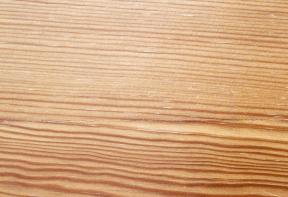Restoration Workshop: Wood bleach
What you need to know about wood bleach
There are times when stripping a piece of furniture reveals hidden and not-so-marvelous details about construction, the work habits of the original craftsman, or the uses and abuses of past generations of repairmen and owners. These details can be totally unexpected, especially if the piece is dark in colour.
Measured solutions: The two chemicals that make up wood bleach, sodium hydroxide and hydrogen peroxide, can be combined or brushed onto the workpiece separately
What I’m thinking of are things like different species used in the same tabletop, a strong sapwood-to-heartwood contrast, or wood that was dyed before it was finished so that now the colour is locked in the wood. I’ve even found stains from unknown spilled substances that were just sprayed over with coloured lacquer. The stains weren’t visible until the finish (including the colour coats) was stripped off.
If any of these problems exist in your project, there are at least four possible courses of action.
The simplest solution is to allow the disparate pieces, heartwood and sapwood, and unidentifiable stains, to exist as they are and tell the true history of how the piece was made. In other words, just apply a clear finish. However, it might be difficult to harmonize this piece with an existing roomful of furniture. If the piece of furniture is a valuable antique, you may want to think twice about removing stains that give the piece character. Removing an ink stain from a writing desk, for example, may actually lower its value.
The second solution, also simple, is to paint the furniture.
A third solution is to colour the lighter wood to match the darker wood, and then apply a clear finish. This is usually easier in theory than in practice. You must be careful not to add too much colour, as well as to keep the stain off the darker wood you are trying to match. I find an airbrush is the best tool to use in this instance.
The fourth solution is to lighten the dark wood to match the light wood. This may sound improbable but in fact can be done quite handily with the appropriate type of bleach. The hard part is setting up a safe environment to work in. Proper ventilation (do it outside if possible), protective clothing, rubber gloves, a respirator with cartridge filters approved for working with ammonia, and goggles (not safety glasses as you need protection from the fumes, not just splatters) are absolutely necessary.
Jump to a section
- Page 1 : Stripping furniture
- Page 2 : Oxalic acid
- Page 3 : Chlorine bleach
To leave a comment, please log in












No comments